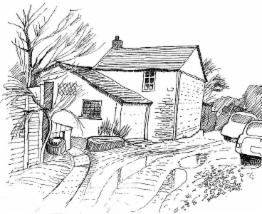

The traditional circular shape was due to a suspicion that the devil, or evil, could find no corner in which to hide." THE OXFORD TIMES Discover what the Romans did By Maggie Hartford The Roman Way. They were called lengthman's houses because the occupant was responsible for looking after a particular length of the canal. Extract "The circular stone building to the left of the canal bridge at Cerney Wick is one of five lengthman's houses built along the course of the canal in 1790. Each walk is accompanied by an OS map and illustrations of points of interest, as well as notes and fact boxes on points of archaeological and geographical interest. Practical details such as bus routes, tea rooms and accommodation are also provided. Steane has made life easy for casual walkers by breaking the hike into 17 manageable sections, which are then divided into shorter segments, so the book contains walks suited to all ages and abilities. She brings similar expertise and enthusiasm to this latest title, devoted to a 174-mile walk on Roman ways that form a triangle from Chesterton in Oxfordshire, Cirencester in Gloucestershire, and on to Silchester, a Roman walled town in Hampshire, finishing at the Roman military fort at Alchester. ‘The support that I received along the way and the quality of the finished product has given me a head start in selling the book.By Clover Stroud of the Sunday Telegraph The Roman Way By Elaine Steane (Reardon Publishing) Elaine Steane is a keen rambler whose previous book focused on the Seven Shires Way, a 234-mile walk in central England. I have been retired for several years, but now feel I have started a new career.’ What Elaine says about working with SRA Books

Having the book in print records these walks for posterity. Each book is richly illustrated giving a window on the countryside to further encourage people to explore. ‘I have been a volunteer leader of many walks in the Oxfordshire area, but gathering and carefully researching the walks into a published book has enabled me to share them with a larger audience. She holds the Advanced Diploma in Environmental Conservation from the University of Oxford’s Department for Continuing Education.

Walking is among its recommendations for benefiting physical, mental and spiritual wellbeing.Įlaine is a member of the Campaign for the Protection of Rural England (CPRE) and the Oxfordshire Ramblers. Her first book was The Seven Shires Way, a 234-mile walk around the Oxfordshire county boundary, which was followed by The Roman Way, a 174-mile walk on the theme of Roman roads.Īs a nurse she specialised in the prevention of heart disease and stroke, introducing the ‘Human MOT’ for which she was awarded an MBE. Elaine Steane (née Fullard) is the daughter of a cartographer and a geographer so grew up being able to identify glacial moraines and U-shaped valleys.


 0 kommentar(er)
0 kommentar(er)
